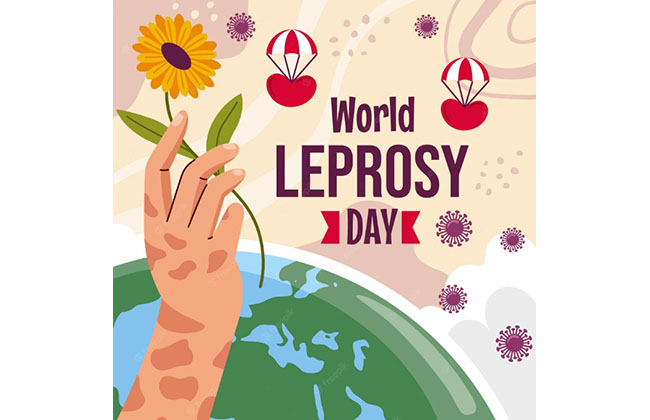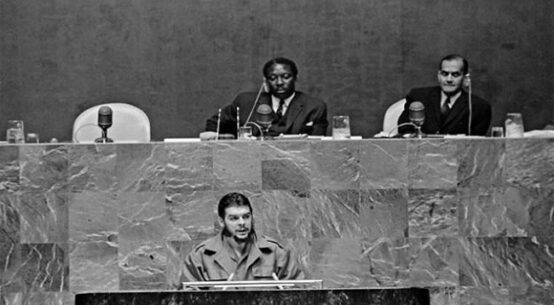
World Leprosy Day (WLD) will be observed in the world, including in Bangladesh, on January 29. Generally held on the last Sunday of January each year, the day aims to increase public awareness of leprosy and the complications surrounding it. The day is an opportunity to lift up the voices of people affected by leprosy throughout the world. In Bangladesh, communities and people affected by leprosy come together to raise awareness and host events that are aimed at reducing leprosy stigma and raising awareness of the disease. There is also good engagement from the government, who marks the day through events.
The theme for the day this year has been selected as ‘Act now: End Leprosy’. The theme stresses on empowering countries to end leprosy and inspire real commitment. This year’s campaign calls on governments, decision-makers, donors and the global health community to prioritize leprosy elimination efforts to realize zero leprosy goals.
According to WHO, this year’s theme calls attention to three key messages. Elimination is possible: We have the power and tools to stop transmission and defeat this disease. Act now: We need the resources and commitment to end leprosy. Prioritize leprosy elimination. Reach the unreached: Leprosy is preventable and treatable. Suffering from leprosy is needless.
WLD is an opportunity to celebrate the lives of those affected, raise awareness of the signs and symptoms of the disease, and tackle the stigma that too often surrounds leprosy. WLD was initiated in 1954 by French philanthropist and writer Raoul Follereau. Later, the initiative to observe the day was undertaken by International Federation of Anti-Leprosy Associations (ILEP). Founded in 1966, Switzerland-based ILEP is a federation of 13 international NGOs united to create a world free of leprosy.
The occasion provides an important opportunity to draw attention to the often-neglected aspects of this disease – the deep-rooted myths and misconceptions about the disease that many persons affected experience daily. And showcase which articles in the Universal Declaration of Human Rights are being violated.
Rights activists say, health-related stigma continues to be a major cause of discrimination and exclusion. Fear of stigma deters people from seeking healthcare when they may be affected by leprosy, adding to the risk of disability and ongoing medical issues. Because of leprosy, individuals and families experience social isolation. This affects people‘s self-esteem, disrupts their family relationships and limits their ability to socialise, obtain housing and jobs – their human rights.
Sources concerned said, leprosy is at least 4,000 years old, making it one of the oldest diseases known to humanity. However, we believe we can be the generation that finally ends the transmission of leprosy – our target is zero transmission by 2035.
Each year about 210,000 women, men and children are diagnosed with leprosy, according to World Health Organization figures. Up to 50% of people affected by leprosy will face mental health issues, such as depression or anxiety. There is also an increased risk of suicide among people living with the disease. Many millions are living with leprosy-related disabilities, particularly across Asia, Africa, and South America.
Leprosy is an infectious disease caused by specific type of bacteria that targets the human body’s nervous system. It generally affects the hands, feet and face. It is believed to spread through extensive exposure to the bacteria causing it. Leprosy is curable with a combination of antibiotics known as Multi Drug Therapy (MDT). This treatment is available for free across the world. If leprosy is not treated, it can lead to serious complications.
In Bangladesh, leprosy is a national problem but it is always pushed in a corner. The issue has been sidelined more during the outbreak of Covid-19. Through curable with timely and regular treatment and its treatment and test are available for free in the country, leprosy continues to inflict sufferings on our people.
According to The Leprosy Mission International-Bangladesh (TLMI-B), annually on an average about 4,000 new cases are detected in Bangladesh in the recent years. About 10 percent of the victims later become disabled due to lack of timely and quality treatment.
Bangladesh’s leprosy burden ranks fourth-highest in the world. Every year about 3000 leprosy sufferers are affected by complications that require specialized treatment in hospital. If not diagnosed and treated quickly, leprosy can result in debilitating disabilities, and depression. The human suffering resulting from the physical deformities and related social problems are immense.
There are a number of issues, which are hampering the eradication of leprosy in Bangladesh. Leprosy is yet to get priority to the government, budget in this sector is far less than requirement, and there is scarcity of trained manpower for detecting leprosy cases in the remote areas. There is lack of awareness raising activities for dispelling stigma over the disease. As the doctors have less experience on leprosy, they find it tough to treat patients. There is lack of treatment facilities for complex cases in the country.
Although easily curable today and rare in developed countries, the disease is surrounded by stigma. Infected people are often discriminated against and ostracized, leading to a lack of access to appropriate medical care, treatment, and even denial of basic human rights.
Leprosy has caused immense human sufferings when the affected remained untreated. Leprosy is not only a medical issue, but also a social issue because of stigma and discrimination that the disease attracts.
The day reminds us of the important tasks that lie ahead. It is needed to ensure early active case detection, quality and quick treatment, continuous multidrug therapy (MDT) supply, and counseling (during and after treatment) for the affected people and their families. We want to see a future where access to quality leprosy and other treatment is available through the government to ensure that even if NGOs are not providing leprosy services, that services will still be provided and accessible at all government health complexes.
We need to work so that the affected people in Bangladesh can be included into general society with equivalent access to resources, services, rights and dignity in society, which will eventually lead to a Bangladesh without leprosy.
Adequate financial allocation in the national budget is needed for leprosy programme aimed at eradicating leprosy. Specific upazila-wise financial allocation is important, because district Civil Surgeons can easily utilize the money for anti-leprosy activities in their respective areas.
Bangladesh government is sincere about the eradication of leprosy. It is hoped that effective steps to be taken now in the interest of leprosy free Bangladesh.
Md. Sazedul Islam is a freelance journalist.


